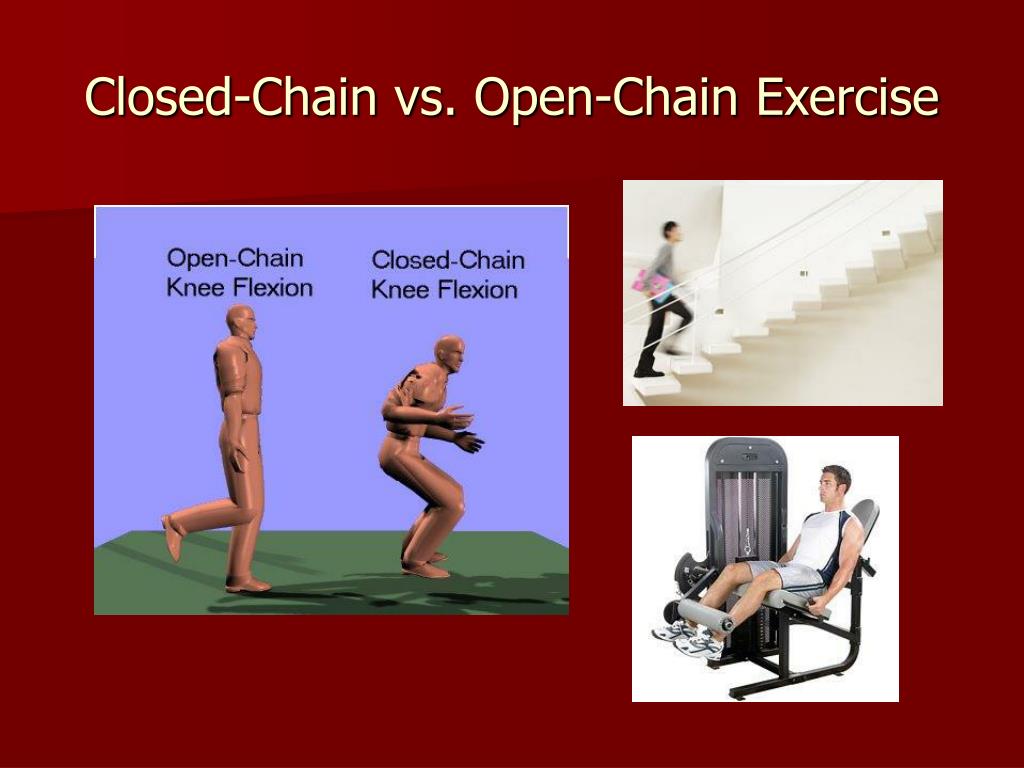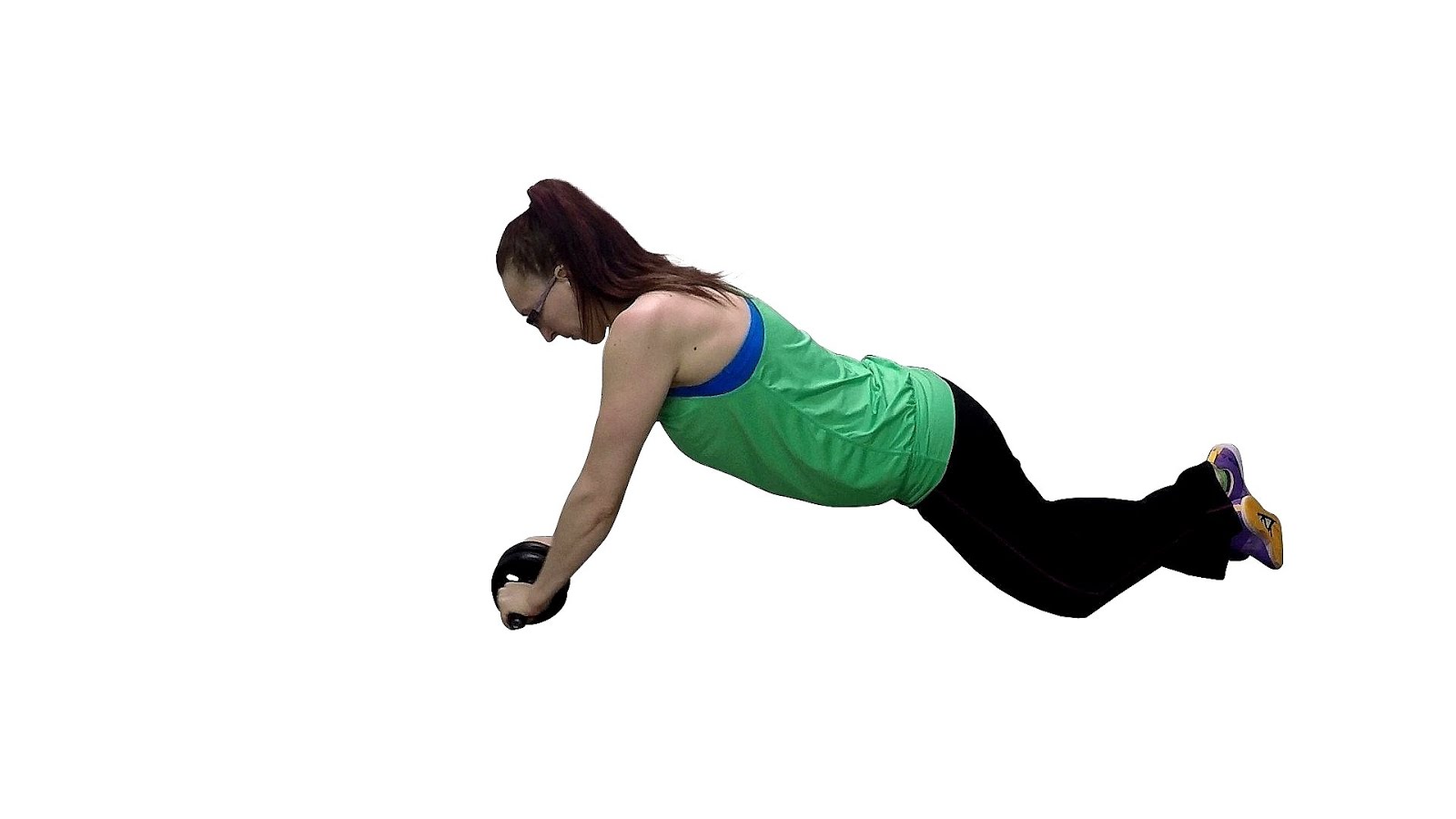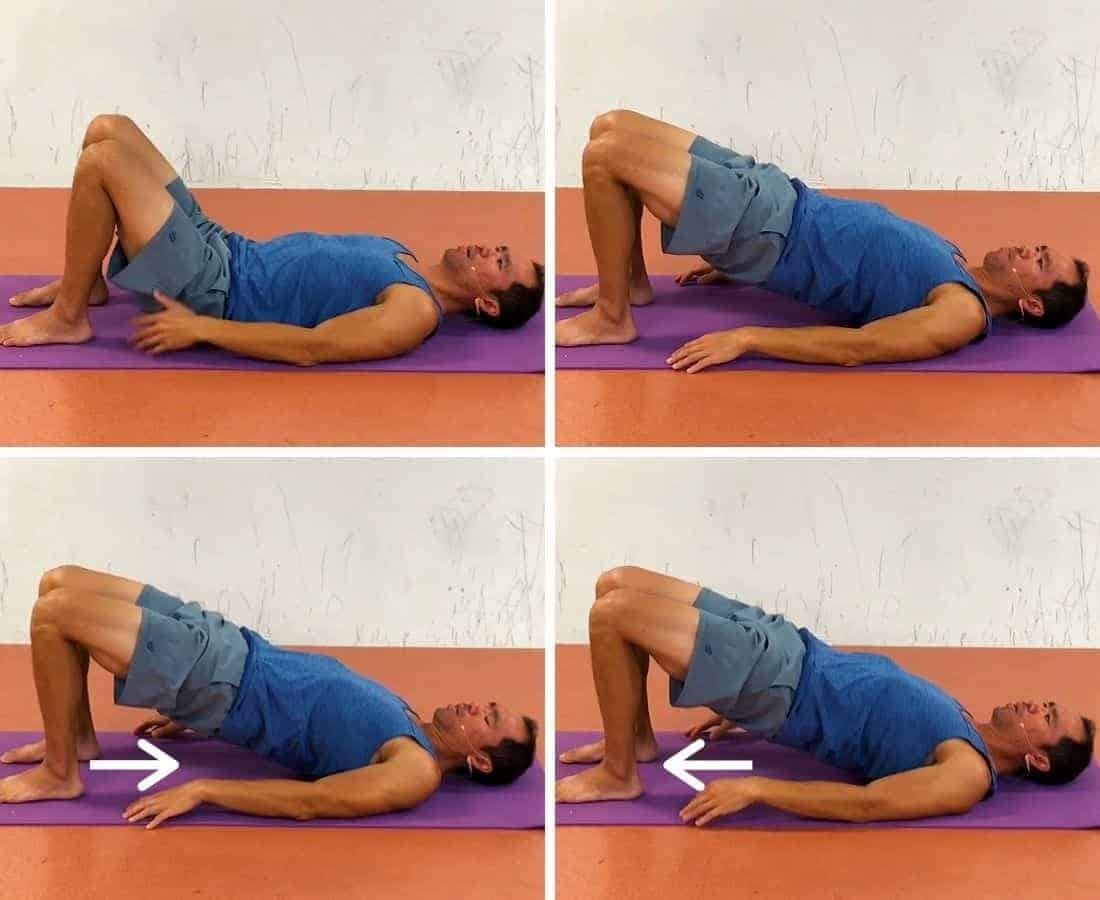
Honors Symposium 2021 Open Chain Exercises vs. Closed
Introduction The Kinetic Chain is a method used to describe human movement, divided into either an open kinetic chain (OKC) or a closed kinetic chain (CKC). In an open kinetic chain, the part farthest from the body (e.g., foot or hand) moves freely and isn't fixed to an object. [1] In a closed kinetic chain, this part is stabilised.

PPT Closed Chain Exercise and Knee Pathologies PowerPoint
12 Effective Open And Closed Kinetic Chain Exercises Plan your workouts strategically with multi-joint exercises that enhance functional movements. Reviewed by Hannah Shine, AFA Certified Personal Trainer Written by Himanshi Mahajan, BSc (Life Sciences), Certified Health & Nutrition Life Coach

What Are Open And Closed Chain Exercises Which is Best?
The ACL prevents anterior translation of the tibia on the femur in open kinetic chain. The ACL also prevents posterior translation of the femur on the tibia in closed kinetic chain. Plot twist: This means that you stress the ACL during both OKC and CKC exercises. It is a well-accepted fact in the rehabilitation community that anterior shear.

Quadriceps Strengthening with Flexed Knees (Non Weight Bearing) YouTube
The best known closed chain exercises for your knees and legs are squats and lunges. Here is a selection of less well known exercises for an all-round leg workout that you can add to your routine, especially if you are recovering from a knee injury. Learn How to Become a Certified Personal Trainer Online in Less Than 6 Months Standing weight Shift.

PPT Closed Chain Exercise and Knee Pathologies PowerPoint
While open chain exercises that allow the leg to move freely are often used in the beginning of rehabilitation, progression to closed chain exercises that involve keeping the feet planted on the ground can safely be performed when irritation behind the kneecap has decreased and activation of your quadriceps and glutes muscles has improved.

Closed chain exercises Knee Knee Choices
Closed-chain exercises mean your body is pushing against a fixed surface while open-chain exercises are freely moving. These terms are especially relevant in physical therapy, sports medicine, neuro-rehabilitation, prosthetics, orthotics, and other areas of medicine that focus on the musculoskeletal system. fizkes / iStock / Getty images

Closed Chain Lower Quad Stretches YouTube
In closed-chain exercise, the limb is stationary while the body moves. For example, a squat is a closed-chain exercise because your feet stay stationary while your quadriceps do the work. In contrast, a seated leg extension is an open-chain maneuver, because your seated body is still, but your leg moves as you extend it.

Closed Chain Exercises For Hip Online degrees
For the primary outcome of tibial laxity, the results are shown below: Early addition of OKC (<6 weeks post-op) Low to moderate quality evidence from 3 studies (n=203) with no between group differences in laxity at any time points from the early addition of OKC when compared to CKC

Closed chain exercises for patellofemoral disorders YouTube
About Press Copyright Contact us Creators Advertise Developers Terms Privacy Policy & Safety How YouTube works Test new features NFL Sunday Ticket Press Copyright.

Figure 1.1 from The effect of open and closed kinematics chain
Closed-chain exercises are safest in the 0- to 45-degree range. In contrast to closed-chain exercises, open-chain exercises (leg curls and knee extension), are most safely carried out from 25 to 90 degrees for patients with patellofemoral pain syndrome ( 25, 33 ). These researchers agree with the potential for excessive pressure when performing.

Quadriceps Strengthening in Weight Bearing Postures YouTube
Introduction Closed Kinetic Chain (CKC) exercises or closed chain exercises are exercises or movements where the distal aspect of the extremity is fixed to an object that is stationary.

Static open chain quadriceps strength L YouTube
The anterior cruciate ligament (ACL) is a key structure in the knee joint kinematics, as it resists anterior tibial translation and rotational loads. The ACL provides approximately 85% of the total restraining force of anterior translation. It also prevents excessive tibial medial and lateral rotation, as well as varus and valgus stresses [1].

Unexplainable Knee Joint or Knee Cap Pain? Try These 3 Exercises
Thank you. Closed chain exercises for hypermobility effectively increase stability and reduce pain and injury. The good thing about these exercises is they involve the distal end of the limb being fixed to the ground or a stable surface.

Closed Chain Quadriceps Muscle Strengthening Tutorial ONLINE PHYSIO
Chest fly using dumbbells (open kinetic chain) Hold 1 dumbbell in each hand and lie flat on a weight bench. Bring your hands over your chest with arms slightly bent, so the dumbbells meet above.

Progressive Squatting Exercises for Quadricep Strength YouTube
Closed chain exercise tends to emphasize compression of joints, which helps stabilize the joints. Try these 6 closed chain exercises for knees and legs.. Quad Dips. Stand with your feet shoulder width apart, using a door frame or counter top for balance, at first. Slowly flex your knees about 20 to 30 degrees and hold for 10 seconds.

Neuromuscular Exercise for Degenerative Knee Disease
Try it free.* Live TV from 100+ channels. No cable box or long-term contract required. Cancel anytime. Dismiss Closed chain exercises can be great for working a muscle in a dependent.